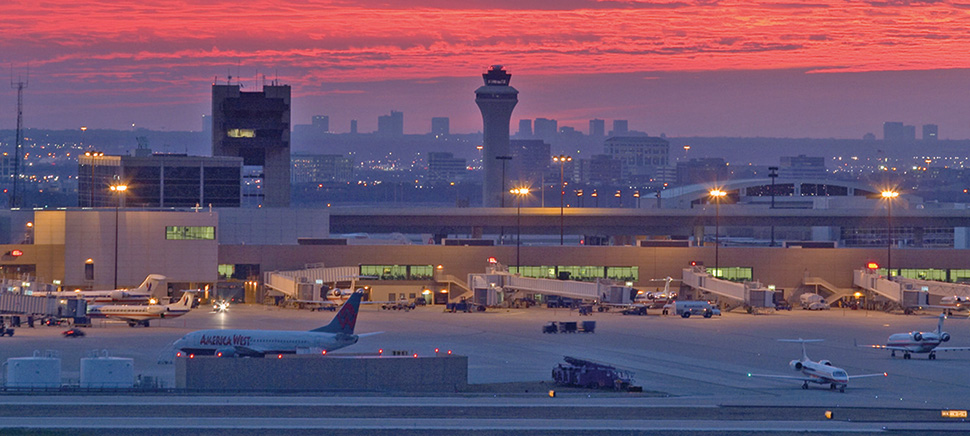DFW IS HOME TO AIRLINES, AIRPORTS, FIGHTER JETS AND AVIATION INNOVATIONS
Dallas-Fort Worth is one of the world’s major aviation centers, growing from the early small air fields to become the home of the world’s largest airline, the world’s biggest low-cost carrier, and the fourth-busiest airport in the world based on operations.
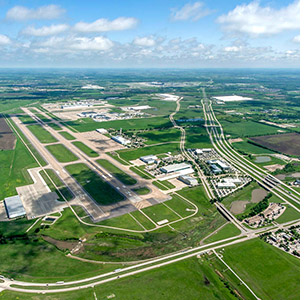
Fort Worth Alliance Airport. Photo courtesy of AllianceTexas.
The massive Fort Worth Alliance Airport was the world’s first 100-percent industrial airport designed for cargo and corporate aviation, and is home to the annual Fort Worth Air Show.
North Texas is a center for commercial, private and corporate aviation, and is home to one of the largest makers of military fighter aircraft in the world. DFW also is a hub for the development and production of helicopter technology with companies such as Bell Helicopter in Fort Worth and Airbus Helicopters in Grand Prairie.
AIRPORTS HELP DRIVE NORTH TEXAS ECONOMY
In short, North Texas’ economy has soared in recent decades, lifted to a major degree on the wings of scores of airplanes that take off and land each day at Dallas Fort Worth International Airport, Dallas Love Field, Fort Worth Meacham International Airport, and smaller airports such as Dallas Executive Airport, McKinney National Airport, and Addison Airport.
Those planes deliver people and goods to North Texas, and make it possible for DFW businesses to compete around the nation and abroad.
While North Texas is an aviation juggernaut today, its beginnings were far more humble and date back to the birth of what is now Meacham International Airport in Fort Worth.
“Meacham was established in 1914 to serve U.S. Army,” said Jeff Kloska, assistant director of aviation for the city of Fort Worth.
The facility, then known simply as the Fort Worth Airport, changed hands between the government and the city a few times before becoming the municipal field named after Fort Worth Mayor Henry C. Meacham, who helped establish the initial lease for the airport when it first opened.
By the 1930s, it housed hangars for American Airways — later American Airlines. Like the now-closed Amon Carter Field, the air field eventually was deemed unsuitable for further expansion. So, it had to chart a new course.
“Back in the ’80s and ’90s, Fort Worth was a type of flight training mecca for the U.S.” – Jeff Kloska.
“Back in the ’80s and ’90s, Fort Worth was a type of flight training mecca for the U.S.,” Kloska said. Today, the field is mainly used for private traffic and flight training.
Dallas Love Field is a little younger than Meacham, but has a similar history.
The name Love Field dates back to October 1917, when the U.S. Army named its new flying field in Dallas after 1st Lt. Moss Lee Love, a cavalry officer who was killed in a biplane crash in California while practicing for his military aviator test. It remained a military field until 1928, when the city of Dallas acquired its 167.10 acres for $325,000.
Commercial air service began at Love Field in 1929 when Delta Air Service Inc. started passenger service from Dallas to Jackson, Mississippi.
ADVANCES IN AVIATION TECHNOLOGY
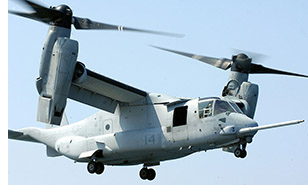
Bell Helicopter’s V22 Osprey
DFW-based aviation companies have been at the forefront of aviation innovation for decades. Take Bell Helicopter, for instance.
“Bell has a long legacy of innovation,” said Scott Drennan, director of innovation at Bell.
The company, then known as Bell Aircraft, designed the X1, which in 1947 became the first aircraft to break the speed of sound.
Bell’s innovations have continued. In 1989, the V-22 Osprey took flight as the world’s first tiltrotor aircraft. It can take off like a helicopter and fly like a plane. The aircraft is in service today in some of the world’s most-tense areas where conflicts exist.
“We consider that one of our crown jewels of innovation.” – Scott Drennan on the V-22 Osprey
“We consider that one of our crown jewels of innovation,” Drennan said. “It’s able to go twice as fast and far as normal helicopters.”
In 1947, the company designed Model 47, which was the first helicopter certified for commercial use. In addition to groundbreaking models such as the V-22 and the Bell/Agusta 609, Bell is now working on the V-280 Valor and the 525 Relentless , which will be the first fly-by-wire, commercially certified helicopter.
But as Drennan pointed out, innovation doesn’t have to just mean technology.
“The 505 (Jet Ranger) is innovative for a different reason,” he said. “We often think about innovation as the fancy technologies and novel configurations, but the 505 is very innovative from a cost standpoint … We’ve got it to a cost point that’s going to be right around $1 million, which is a wonderful offering for folks who want to get around in a smaller helicopter.”
A LEADER IN MILITARY AVIATION
Although headquartered in Bethesda, Maryland, Lockheed Martin bases two of its business units in Dallas-Fort Worth.
Lockheed Martin Aeronautics in based in Fort Worth, and the Missiles and Fire Control unit is headquartered in Grand Prairie. Combined, they employ roughly 13,000 people.
Lockheed’s aircraft predecessors in Fort Worth — Consolidated Aircraft, Convair, and General Dynamics — produced aircraft that were critical to Allied victories in World War II, waging the air war in Vietnam, and during the Gulf wars.
In the 1940s, the B-36 Peacemaker intercontinental bomber was built at the massive aircraft plant in west Fort Worth, and was the largest mass-produced piston-driven aircraft ever built. It was a familiar site to residents of Fort Worth as Strategic Air Command crews flew the giant airplanes from Carswell Air Force Base adjacent to the plant.
General Dynamics introduced the F-16 Fighting Falcon in 1978. The fighter jet is still made by Lockheed Martin in Fort Worth and is one of the most-successful fighter jets in history. The plane still is operated by the United States and a number of foreign countries.
Now, the plant produces the F-35 Joint Strike Fighter, the most expensive defense program in history.
Triumph Aerostructures traces its roots back to Chance Vought, which produced the legendary F4U Corsair that saw service in World War II and the Korea Conflict. You might know it from the television show Black Sheep Squadron. Vought also produced Vietnam-era military aircraft.
Triumph now is a leading subcontractor on many commercial and military aircraft programs, and has North Texas operations in Red Oak and Grand Prairie. Formerly, it operated a large plant in Dallas.
A GOOD PLACE FOR THE AIRLINE BUSINESS
While military aviation is big business in North Texas, it’s the airline industry that drives the economy.
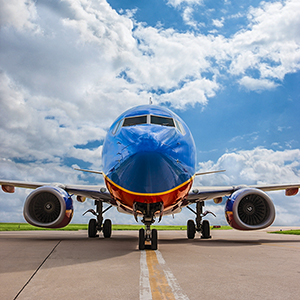
Photo courtesy of Southwest Airlines
Dallas-based Southwest Airlines Co. Inc. (NYSE: LUV), which is known for its friendly customer service and creative brand culture, got its start in 1967 as Air Southwest (the name changed to Southwest Airlines in 1971). Bob Montgomery, the vice president of airport affairs who’s been with the company since 1977, traces its success to two factors: low fares and unregulated service.
“Those were the two big things that Southwest brought to the table that were unique,” Montgomery said. In the 1970s, the Civil Aeronautics Board controlled who flied where and at what cost.
Southwest opted to fly exclusively in Texas, allowing them to deal with the Texas Aeronautics Commission instead and set competitive prices. That decision, Montgomery said, helped pave way for the Airline Deregulation Act of 1978.
The act was intended to remove government control over such things as fares, routes and market entry for new airlines.
“That turned everything on its head,” he said. “That drew a lot of aviation to Dallas, and a lot of notice to Dallas.”
But Southwest wasn’t the only major commercial airline in the area.
American Airlines Group (Nasdaq: AAL) already had a pioneering history dating back to the 1920s.
When it moved its headquarters back to Fort Worth in 1979, the company also opened a new training facility and flight academy for pilots. The next year, the company launched AAdvantage, one of the first frequent-flier rewards programs.
In 1981, American developed its hub at Dallas Fort Worth International Airport.
American now is planning its new headquarters campus in Fort Worth, not far from the airport and adjacent to its training and operations centers.
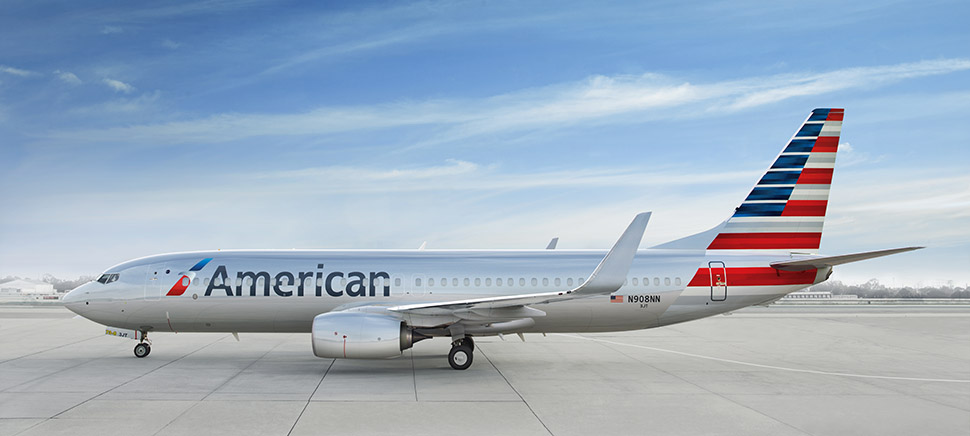
Photo courtesy of American Airlines
TRAGEDY LEADS TO SAFETY INNOVATION
Many developments took place at DFW Airport that have impacted the national aerospace industry. One of the most important safety innovations in aviation history, in fact, evolved from a tragedy there.
On Aug. 2, 1985, Delta Flight 191, a Lockheed Tristar L-1011 wide-body airliner, crashed at DFW Airport, killing 137 people after it was hit by a microburst during a thunderstorm. That disaster paved the way for Doppler weather radar technology that made its way to 45 major airports by 1997, allowing pilots to better handle changes in severe weather while in the air.
While DFW has a storied past in aviation innovations, it’s the geography that makes the area such as a hotbed for airlines, airports and general aviation.
“It really comes down to geographic location, when it comes to airports,” Kloska said. “The DFW area is dead-center in the middle of the country. It’s not a long coast-to-coast flight. You can fly from here to the Middle East or the Far East or Europe, and that’s one of the big draws of this area.”
Lance Murray contributed to this report.
READ MORE IN THE SERIES:
History of Innovation: The Gaming Industry
History of Innovation: The Fashion Industry
For a daily dose of what’s new, now, and next in Dallas-Fort Worth innovation, subscribe to our Dallas Innovates e-newsletter.

